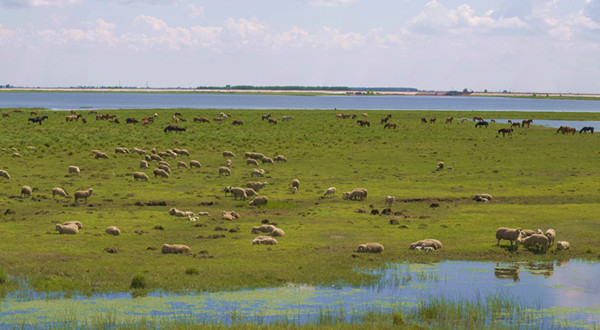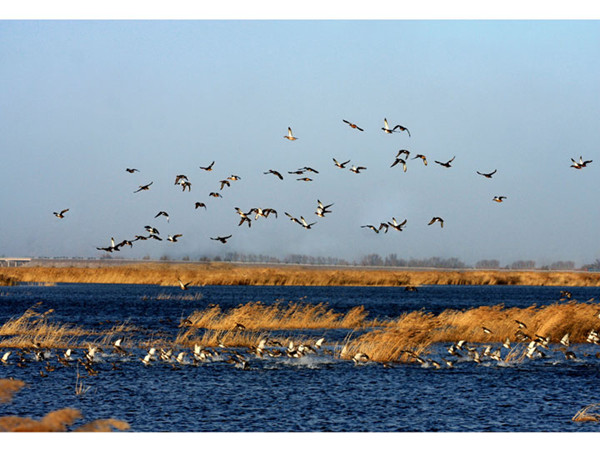This is in northwestern Jilin province, with Heilongjiang province to the north, Inner Mongolia to the west, and administers five counties and three development zones and has a population of 1.90 million. It is home to 29 ethnic groups, including the Korean, Manchu, and Mongolian.
 |
| Huaneng Wind Power Plant in Taobei district of Baicheng |
It is a trade center for Northeast China and famous for its textile, clothing, auto parts and machine industries and, it plays an important role in China’s wind energy development with wind energy potential for the whole province.
 |
| Nenjiang Wet Land |
The city is a national commodity grain base, for its oil plants, coarse cereals, and beans. It also has three national nature reserves and has put years of work into protecting wildlife, whose numbers are growing. Its red crowned crane and white stork are under national protection.
The city recorded annual GDP of 73.46 billion yuan ($11.02 billion) in 2020.
Songyuan is in mid-western Jilin province and has a population of 2.75 million, and administers one county, one county-level city, a district, and two development zones. It is known as a national granary, with its main crops being corn, soybeans, rice, sorghum, sunflower, peanuts, garlic and herbs. Its annual corn output is above 4-million tons. It has forest, meat and fish resources and many rivers and water resources. The Songhua River, which starts at Changbai Mountain is the biggest provincial river. It also contains Chagan Lake.
 |
| Chagan Lake |
It has 20.91 billion cubic meters of natural gas and 15.1 billion tons of oil reserves and oil is a pillar industry. Its GDP grew to 16.50 billion in 2013 and its economic aggregate ranked third in Jilin province. It has many national and provincial roads, such as Hunchun-Ulanhot, Beijing-Harbin, and Changchun-Baicheng highways. The not-yet-completed Changchun-Harbin Expressway and Songyuan-Zhaoyuan Bridge will make Songyuan an important transport and logistic center for the cities of Harbin, Changchun and Shenyang.
 |
| Winter fishing on Chagan Lake |
The city recorded annual GDP of 174 billion yuan ($26.1 billion) in 2020.







